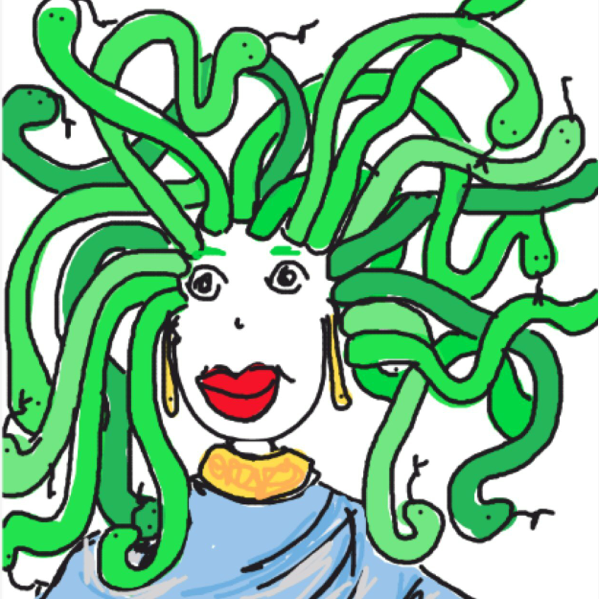You know that Scorcese film the Departed? When I went to see it at the cinema it struck me as so ridiculous I laughed out loud during the really serious parts. I mean, really – am I the only who thought that film was completely shithouse? I mean jesus, the RAT running along the (window sill? I forget) at the end – surely I wasn’t the only one who laughed out loud?
Any film with Leonardo DiCaprio and Jack Nicholson is heading for crapsville. I like Mark Whalberg, but Matt Damon?!
TELL ME I’m not the only one who thought that film was utter crap?!
i guess you get what I mean, right?
Jean put me onto something neat here. It’s a talk by Ken Robinson about learning and teaching and you can watch the clip here. I can hear some of you sighing and clicking on, but I recommend dropping in to have a look and a listen – it’ll make you giggle. And there’s some talk about bodies and dance.
It’s interesting, because I’ve written and thought quite a bit about embodied and disembodied knowledge, and how different cultures privilege one or the other. Robinson talks about academics and how their bodies are really just vehicles for carrying their brains around. It’s true – I’ve always loved dancing (mostly la discotheque!), but before I got hardcore about dancing I always thought of my body as something for transporting my brain. I sufferred from serious migraine headaches – I spent a couple of days in bed each fortnight when I was finishing my MA. Can you imagine that? It seems completely crazy to me now, but then I just dealt with it (well, in a getting-depressed-and-wanting-to-blow-myself-up way).
Now I realise that the problem was that I was spending an awful lot of time sitting on my clack, squirrelling my stress away in my muscles. Now I know that if I don’t get up out of my chair and shake my arse every day, my muscles start to tense up and get cranky. And I get a headache. But I also know that getting up out of my chair and jiggling about to music I love for an hour is WONDERFUL! Going to the gym – dull. Jogging – duller. But dancing? That shit is GREAT!
Writing about dance for my work happened kind of by accident – I was coming out of a shitty first run at a PhD, I was hating it, I was miserable, but I loved dancing. And I thought, ‘What would be my dream situation? What would be most perfect?’ And getting another scholarship to write about dancing and score some funding to go to Herrang was that dream project. And you know what? They gave me the scholarship and they sent me to Herrang, and I wrote a big fat thesis and lots of articles about dancing.
Can you imagine anything more nuts? It just seems too great to be true – getting the chance to do combine dance with the loveliness of thinking and writing and reading and talking all day. I still feel insanely lucky – and I’m sure someone’s going to bust me some day and ask for the money and degree back.
The thing I like to think and write about, though (after I’ve written about saucy 1920s song lyrics), is the way dance works as system of meaning and a medium for the exchange of ideas – the way dance is discourse. That shit rocks. I mean, in cultural studies you’re so centered on the idea of language and words – most of the theory floating around in this discipline has at its heart the idea that words are the most important, most wonderful way of communicating ideas. I dig that – I’m all over the idea that words are great. But I’ve found, working with the various theories trucking about, that this doesn’t allow much room for other ways of communicating or representing the world. Sure, there might be vast tracts of writing about other disocourses, but they’re still vast tracts of words. I can make a joke with my body that simply doesn’t translate into words. You just can’t make the joke work. But one sight gag is worth a thousand words.
And then, the thing that really gets me pumping, is thinking and writing about the way dancers have gotten a hold of the internet and other hi-tech action and appropriated it for ther own, decidely embodied purposes. The last paper I submitted to a journal had a comment from a reviewer where they wrote:
The author needs to explain this meaning for the dance studies outsider and not use it for other purposes like a some sort of repetitive mantra or abstract motif to try and unify the article, or ‘sound academic’ . For example, couldn’t ’embodied use-value’ (p.6) just be ‘inherent usefulness’?
And after I got over huffing and puffing and being angry, I thought about the way I’ve used the expression ’embodied use-value’. I’d spent a large chunk of my thesis exploring the idea of particular technologies having ’embodied use-value’. For me, this meant asking how a particular bit of tech was valued for its place in embodied practice. In other words, dancers value particular types of technology because they can be used in an embodied context. They’re not very interested in books of vast theoretical discussions of dance. But they’ve gone crazy for youtube. Because you can do things with it, with your body. You can watch a clip, stand up and dance along.
I wanted to distinguish between ‘usefulness’ and embodied usefulness. Sure, the internet is neat for keeping people in contact, but for dancers it’s even more useful as a means by which they can access dance footage, download music and organise a dance class. The Lincoln Centre Jazz Orchestra Live in Swing City CD is a wonderful thing in itself, but when you pop it in the CD player and stand up, it suddenly becomes an incredibly useful and wonderful thing. And the difference is that it acquires a material, physical, immediate, embodied value and meaning. Here is the medium by which I can access the work of musicians in another country, years ago. Here is the means by which I am inspired to move my body. Here is the thread that joins me to my dance partner and to the dancers around me and to the people people in the room who aren’t on the dance floor, but are still listening and watching and moving.
When I read Gunther Schuller’s book The Swing Era, I certainly find use for his ideas. I read about Ellington and think about his life and read the musical score on the page. But Schuller’s book suddenly has far more meaning and value for me when I play the song he’s writing about, and get up to physically test the different percussive rhythms and soaring trumpet solos he’s describing. That’s embodied use-value. It’s not just the academic value of an idea or a line of prose. It’s not even the things that I might do with his words with my body in the future. It’s the things that I do do, and am doing, right now, when I’m shaking my arse.
I think that’s one of the things that I find so appealing about dance – each dance is transient. Sure, you can record it and watch it again later. But the real meaning of the dance lies in that moment when your body is in motion, when you’re touching your partner and the communicative process simply outstrips the resources of words. You can’t write about it later and hope to catch the true meaning, or to articulate the way it really felt. But you can certainly get up and move, and feel the meaning.
I think that’s the other important part of dance – it’s not just about watching, but about doing. It’s necessarily participatory discourse. That’s why I’m interested in vernacular dance rather than performance or concert dance – I’m interested in the way vernacular dance doesn’t let you just sit there and suck it in. You have to do it, to make it, to participate with your body. So your body cannot possibly just be a container to carry your brain around in. It actually is the medium and the message and the meaning all at once.
Ok, that’s a long way away from the original clip, but I guess you get what I mean, right?
so what have i been doing?
Sorry I haven’t written anything interesting lately. I’ve just been busy with other things. I am reading your blogs, though – just not commenting. If I owe you an email – sorry!
What have I been doing?
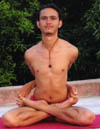
Going to yoga twice a week or so. The class I did on Saturday really kicked my arse. I’ve been having more trouble with my right hip (as I get older and less fit I find my minor niggles getting more niggley), so we did a lot of stuff to help the sartorius and whatsit get it together. We did a lot of standing poses, which I quite like, and lots of work on the sixty zillion muscles in our lower torsoes and around our hips. So today I am really sore and achey. My adductors (you can see a map of the adductor gang here) are talking to me. But at least I’m not getting grizzle from my Tensor fasciae whatsit – which is usually especially achey (it might not be called the Tf – I am crap with names). My lower back is achey, there’s some grumbling from various abs and my shoulders are aching – shoulders meaning everything across my back from my neck to the bottom of my shoulder blades. I also have achey ankles. These are all good aches, because it means that I’ve actually been using these buggers.
I <3 yoga, but yoga is not for babies.
 Reading about blues music, the record industry and radio in the 1920s. I am working on a paper in a very loose way (I discussed the stuff I was reading here, ages ago), but mostly just reading where my interest takes me. I’m fascinated by the social, political, industrial and economic forces colliding in the blues music of that period. Blues music was incredibly, crazily popular in the 20s. Yet segregation was still seriously in place throughout the US, so black artists couldn’t work in the control booth with whites, were un- or underpaid by record labels, or dismissed as ‘low’.
Reading about blues music, the record industry and radio in the 1920s. I am working on a paper in a very loose way (I discussed the stuff I was reading here, ages ago), but mostly just reading where my interest takes me. I’m fascinated by the social, political, industrial and economic forces colliding in the blues music of that period. Blues music was incredibly, crazily popular in the 20s. Yet segregation was still seriously in place throughout the US, so black artists couldn’t work in the control booth with whites, were un- or underpaid by record labels, or dismissed as ‘low’.
‘Coon songs’ were also very popular – and very disturbing. A Coon song was basically a song performed by a white artist in black face, or otherwise ‘pretending’ to be black (and many of these were Jewish, which is weird stuff). They were pretty dang offensive. Minstrelsy generally was still very hip. But the blues music being sung and performed (often by women) was politically quite hardcore – the example I discuss in that earlier post (linked to above) is just one of a series of songs dealing explicitly with racist violence, domestic violence, poverty, sexuality and sex and so on. And it didn’t pull punches.
In addition, the Great Migration was happening – thousands of African Americans were moving north to escape lynching, Jim Crow laws and unemployment in the south. They ended up in cities like New York, LA and Chicago. So there were thousands of people from all sorts of different regions coming together and sharing music and dance in new, urban communities. Like Harlem. Race riots happened in most cities.
In terms of the music industry generally, radio turned up in the mid 20s, and within a six month period the phonograph industry was completely gutted. Prior to that moment it had been incredibly successful. But radio – with ‘free music’ – just killed it. So the race record labels (like Black Swan (NB I think the dates are wrong in that article) – labels run by African Americans and recording African American artists) were killed off. And their positive social work was cut off as well.
Then I’ve also been reading about the shift from blues to jazz in the late 20s, and the effect this might have had on black participation in the music industry. What was the impact of the formalisation and regulation of American radio on the independent black stations pushed off the dial by white business interests? What did it mean that radio stations wouldn’t record black artists in many cities? What’s significant about white artists pretending to be black (and vice versa) when they sang on the radio? When you keep in mind the fact that black artists and live music was very, very popular, what does it mean that white radio stations were ignoring black artists? And then, even more interesting, what is the import of each major regional centre/city having its own radio stations and radio legislation? And how does the American Federation of Musicians fit into all this – what with their recording bans in the 40s and racially segregated ranks during the 10s, 20s, 30s…? Surely there’s some sort of labour/union/race/class thing to be ferretted out there…
So I’ve been distracted by all that lovely stuff (who knows what was happening in Australia in the 1920s, music industry wise). But eventually I’ll get to the (interesting) point where I’m discussing how contemporary swing dancers – largely white, middle class urban youth – get into this type of music.
I’ve read a lot, but I need to stew it for a while before I can write cleverly about it.

Going to the Astor Cinema. To see the Fountain and Eragorn in a Friday night double. Nice date night action. The Fountain was dull, Eragorn was dumb (and if you’ve ever read any sf ever, 100% derivative… but not bad for a teenager). The Astor rocks, it’s nice to be able to go see a double feature on a Friday night for $13. The seats are uncomfortable, but they have nice cakes for the intermission. And it’s a nice art deco cinema (not as posh as the Westgarthe, but still lovely). We catch our tram down to the Domain interchange (about 30 minutes), then a tram down to the Dandenong Rd/Chapel St intersection (about 15 minutes). 45 minutes to get so far south is pretty good stuff, really. And they’ve extended the tram hours on Friday nights, so we can get home comfortably as well. All up it costs about $20 each for tram tickets, two films and snacks. Not bad at all for a nice date night. We have started eating dinner down there as well before the films, but have yet to find a cheap restaurant that’s not serving greaser food. Suggestions welcome.
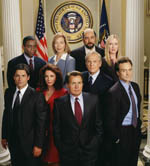 Watching lots of West Wing and other telly on DVD. WW rocks the world. Yesterday I got Commander in Chief‘s first four episodes out on DVD. Dumb. It simply can’t compete with the fabulousness of WW. It’s poorly acted, poorly written, scarily simplistic and politically naive (it’s a soap, really), and all this does no favours to the concept of a woman president. Maybe I’d have dug it if I’d never seen WW. But not now.
Watching lots of West Wing and other telly on DVD. WW rocks the world. Yesterday I got Commander in Chief‘s first four episodes out on DVD. Dumb. It simply can’t compete with the fabulousness of WW. It’s poorly acted, poorly written, scarily simplistic and politically naive (it’s a soap, really), and all this does no favours to the concept of a woman president. Maybe I’d have dug it if I’d never seen WW. But not now.
I’ve also been working my way through House, which is much better than I thought it would be (admittedly, I’d thought it’d be shit). I’m really interested in the way they deal with ‘ethics’. The assumption is that Dr House doesn’t pay attention to formal medical ethics – he ignores ‘DNR’ (do not revive) orders, he bosses patients around and is rude, he does as he likes. With this in mind, how does this sort of bloke handle relationships with women, and more importantly, how does an American soap deal with an ethically dodgy protagonist? Is he going to get ‘reformed’ (I have my suspicions), is it going to be normalised? In addition to House’s own dodginess, his best friend (whose name I can’t ever remember – they guy from Dead Poets’ Society) seems always on the brink of adultery; one of House’s ‘assistant’ doctors (residents?) worked to undermine House by spying on him for the temporary boss-of-hospitality, all in order to save his own job; House’s lady resident is smitten with him and has been signed as ‘damaged’ in some way. It’s all a bit suss. But that’s what makes it interesting. Not interesting in a WW way, but interesting in a ‘what will this pop TV do with these issues?’ way.
While I’m on this tack, I have to say I have some minor niggles with the way WW handles gender. CJ seems to get quite different treatment (narratively, as well as by other characters) than the men. I don’t know if this is the program being ‘realist’, or some ‘unnoticed’ sexism sneaking in. Either way, it’s interesting enough to keep me watching.
DJing a bit, dancing a bit. Nothing to report. It’s kind of boring, actually, and I’m much more interested in yoga at the moment. There are plenty of CDs I want, and books I want to buy and read. But not much to talk about, really.
Reading a stack of crime fiction. I’ve finally made my way through a massive stack of sf from the Mother, and have started hoeing through a stack of crime fiction from the Supes (she reviews crime novels for a newspaper so has lots and lots of good things to borrow). I’m selective with my crime reading – I don’t like true crime, and I don’t like those voyeuristic and scupulously detailed discusssions of brutal rapes and murders. But I do like figuring out who did it and why. Right now I’m reading a Michael Connolly called the Lincoln Lawyers, and I’ve just finished one called The Winter of Frankie Machine by Don Winslow, which is apparently going to be a film in 2008. I’d really like a nice slab of sf, though, as the crime is kind of coming to an end. I think I’ll pop into the book shop in the city (called swords and something or other, or to Rendezvous Romance – because they sell really cheap new novels) and burn a hole in The Squeeze’s credit card.
big women
I know, I know, another youtube post.
Hey, I’m doing some reading on blues music and women blues artists, and they reference a bunch of soundies – and the biggest collection of soundies is on youtube.
This one is fascinating. Louis Armstrong’s playing Swingin’ on Nothin’, and the track features Velma Middleton and George Washington on vocals. Middleton is the interesting part. Armstrong was loyal to her for years, and even though she wasn’t the best vocalist, he kept her in his band and on his recordings.
But the bit that interests me is the way she dances in the following clip. She’s a big woman – tall and carrying a lot of weight. But she’s down on the ground in hiiigh heels and a big flowy dress. It’s kind of an understatement to say she offers an interesting contrast to the dancing female bodies in this clip!
note to self
Check out rake’s progress regularly.
blackbottom
Just so’s you can see what happened when white media got ahold of black dance in the 20s:
(from here).
That’s pretty much the stuff we learnt in the second class on Saturday. I’m the little round kid in the white dress in the clip, but with less coordination.
lady dances the blues
So go here and check out some badass solo sister action. When I say ‘solo jazz’, that’s what I’m talking about. The splits stuff and the girl in white doing the tremors could be slotted into the ‘eccentric dance’ category – sort of ‘stunt dancing’.
Here’s the descriptor from the page:
Dancing outtake from Hollywood Rhythm Vol. 1: The Best of Jazz and Blues – Released 2001
Section: A Bundle of Blues (excerpt taken from approx. 7 min into the section to the end)
Stars: Duke Ellington, Ivie Anderson, Florence Hill, Bessie Dudley, Duke Ellington Orchestra
Plot Outline Duke Ellington and his orchestra play two jazz compositions plus ‘Stormy Weather’ (sung by Ivy Anderson).
Here are some stills to whet your appetite:
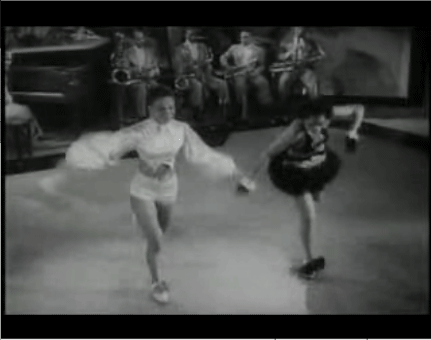
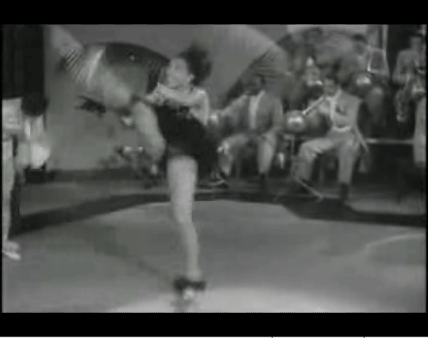
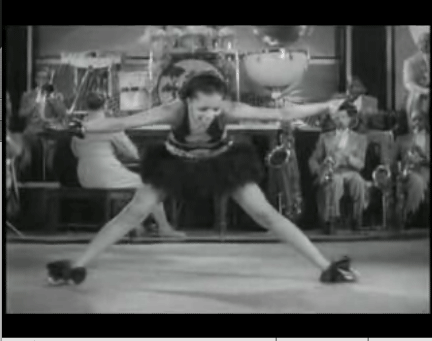
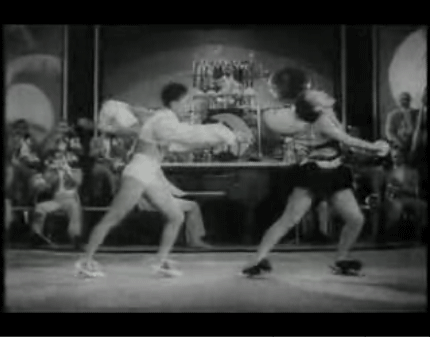
a crazy rambly sf post
Tigtog’s writing about the following list of SF here. These are apparently the
“Most Significant SF & Fantasy Books of the Last 50 Years†.
Because I’m feeling exceptionally lazy, here are her follow-up comments (which make the whole thing far more interesting), cut and pasted:
The Bechdel-Wallace test/rule (originally applied to films – the rule’s origins are noted here), asks does the book have:
1. At least two female characters, who
2. talk to each other, about
3. something besides a man?
If the book/film passes the BW test, it has at least a glimmering of women as fully realised characters beyond being mere love interests competing for male attention. It may not have much more than that, but at least it has that much.
The BW test means that a book doesn’t get a pass for having a single strong, fascinating, female character who is an exceptionalist token, displaying her considerable strengths only in discussions with men (e.g. Eowen from LOTR or Trillian from HHGTTG). It should be easy for SF&F generally to hurdle this low bar, as there’s important quests/missions and esoterica regarding magic/technology for people to talk about with each other in a natural fashion. But how well does the listed SF&F actually do?
The idea is to mark the books you’ve read in bold, which I’ll do. I’ll also note how they score on the BWT (from memory, so please correct me if I’ve forgotten a crucial conversation that would allow the book to hurdle the bar).
I’ve just cut and pasted tigtog’s list with comments re the BWT criteria below. If it’s bold, I’ve read it. If it’s got no comments, tigtog didn’t read it. Even though I read a LOT of SF, I haven’t read all that many on this list (though I suspect I have and have just forgotten them – my ps have a massive, comprehensive collection and I read my way through it when I was young. Oh, how I miss getting out of bed in the middle of the night with a torch to go find something new to read from the shelves). These days I don’t read many male authors and re-read a lot of my favourites.
The Lord of the Rings, J.R.R. Tolkien Yes No No.
[I’m not a fan of Tolkein, because I DON’T like his gender politics. Lots of virgin/whore, evil/good dichotomy action.]
The Foundation Trilogy, Isaac Asimov Yes No No
Dune, Frank Herbert Yes Yes Yes
Stranger in a Strange Land, Robert A. Heinlein Yes, Yes, No
A Wizard of Earthsea, Ursula K. Le Guin Yes Yes Yes
[I think it’s important to note that Tehanu, the final book in the Earthsea series, while not listed as ‘the most important’ of these books, is actually my favourite and deals in detail with the effects of violence on children and women. The whole Earthsea trilogy has lots to say about childhood and creativity and violence and abuse, but these things get neglected. Which is why people like to list the first book, and not the later ones, as the ‘most important’.]
Neuromancer, William Gibson
[Tigtog didn’t read it. I did. Sure, there are ladies in this book, they talk to each other, and about things other than blokes, but there are some problems with the definition of ‘women’ in this context. I’m thinking of the ‘female’ AIs specifically. I’m actually not going to allow Neuromancer as an ok-for-sisters book. I think it’s actually way up there on the misogyny list, and cyberpunk generally is very much an adolescent boys wanking over chicks who beat the shit out of them.]
Childhood’s End, Arthur C. Clarke Yes, No, No
Do Androids Dream of Electric Sheep?, Philip K. Dick Yes, No, No
The Mists of Avalon, Marion Zimmer Bradley Yes, Yes, Yes
Fahrenheit 451, Ray Bradbury Yes, Yes, Yes
The Book of the New Sun, Gene Wolfe Yes, No, No
A Canticle for Leibowitz, Walter M. Miller, Jr. No No No
The Caves of Steel, Isaac Asimov Yes No No
Children of the Atom, Wilmar Shiras
Cities in Flight, James Blish Yes, ?, ? (guessing no)
The Colour of Magic, Terry Pratchett Yes, Yes, Yes
Dangerous Visions, edited by Harlan Ellison Yes, Yes, No
Deathbird Stories, Harlan Ellison
The Demolished Man, Alfred Bester Yes, Yes, No
Dhalgren, Samuel R. Delany
Dragonflight, Anne McCaffreyYes, Yes, Yes
[I’m actually a bit sceptical of Ms McCaffrey’s work. Sure, the chicks are happily saving worlds with their dragony/spaceship/pilot mates, but they also like to rush into the kitchen to make their men dinner and spend FAR TOO MUCH of their time wishing they had a man. McCaffrey often sports some scary arse gender politics. I give her a thumbs down on the good-for-sisters scale.]
Ender’s Game, Orson Scott Card Yes, No, No
The First Chronicles of Thomas Covenant the Unbeliever, Stephen R. Donaldson Yes, Yes?, Yes?
The Forever War, Joe Haldeman Yes, ?, ?
Gateway, Frederik Pohl
Harry Potter and the Philosopher’s Stone, J.K. Rowling Yes, Yes, Yes
[This stuff sucks arse. Give me The Worst Witch any day.]
The Hitchhiker’s Guide to the Galaxy, Douglas Adams No, No, No.
[Hm, Trillian is a lady, and she’s in this one, right? Adams isn’t good on the gender politics, though.]
I Am Legend, Richard Matheson
Interview with the Vampire, Anne Rice
The Left Hand of Darkness, Ursula K. Le Guin Yes, Yes, Yes
Little, Big, John Crowley
Lord of Light, Roger Zelazny
The Man in the High Castle, Philip K. Dick Yes, ?, ?
Mission of Gravity, Hal Clement
More Than Human, Theodore Sturgeon Can’t remember
The Rediscovery of Man, Cordwainer Smith
On the Beach, Nevil Shute Yes, Yes, ?
Rendezvous with Rama, Arthur C. Clarke Yes, No, No
Ringworld, Larry Niven Yes, No, No.
[Woah – Niven has some SCARY ARSE gender shit going on.]
Rogue Moon, Algis Budrys
The Silmarillion, J.R.R. Tolkien Yes, No, No
Slaughterhouse-5, Kurt Vonnegut
Snow Crash, Neal Stephenson Yes, Yes, Yes
Stand on Zanzibar, John Brunner Can’t remember
The Stars My Destination, Alfred Bester
Starship Troopers, Robert A. Heinlein Yes, ?, No
Stormbringer, Michael Moorcock
The Sword of Shannara, Terry Brooks Gah! but Yes, Yes, Yes
Timescape, Gregory Benford Yes, ?, ?
To Your Scattered Bodies Go, Philip Jose Farmer Yes, ?, ?
I’m not actually digging this list (which came from the news blog via tikistitch), and is actually a list of (note the dates):
The Most Significant SF & Fantasy Books of the Last 50 Years, 1953-2002
produced by the The Science Fiction Book Club, and apparently some sort of promotional thingy. So we should be a bit sceptical.
Authors I’d add (if I was ignoring the dates problem and the number limit):
H.G. Wells. Of course. But fails the lady-test.
Iain M. Banks (yes yes yes to the lady-test… though he does weird stuff with gender (ie many of his characters can and do change gender at will, especially in the Culture books) and robots and things – you’d have to have a think about the way ‘gender neutral’ is gendered by these blokes).
Madelaine L’Engle (yes yes yes to the lady-test), probably for A Wrinkle in Time
Lois McMaster Bujold (yes yes yes to the lady-test – plus she writes good bloke characters). For any of her Miles Vorkosigan books.
C.J.Cherryh (for Cyteen) (yes yes yes to the lady-test – plus she writes good bloke characters)
Diana Wynn Jones (yes yes yes to the lady-test – plus she writes good bloke characters)
Tanya Huff (yes yes yes to the lady-test – plus she writes good bloke characters)… in fact, there aren’t enough lady sci-fant authors on this list – and scifant has a MASSIVE lady fandom.
something from Marion Zimmer Bradley’s Darkover stuff. Probably Thendara House or perhaps one of the earlier ones… (yes yes yes to the lady-test – plus she writes good bloke characters)
Octavier Butler! Holy shit, how can she not be on this list?!
James Tiptree Junior! Because she totally fooled the entire universe – they all thought she was a bloke FOREVER! (yes yes yes to the lady-test – plus she writes good bloke characters)
C.S.Lewis (because he was important and influential)
Alan Dean Foster (for the Flinx books) (yes yes yes to the lady-test – plus he writes good bloke and young bloke characters)
Sherri S. Tepper (yes yes yes for the lady-test)
Margaret Attwood (for influential, but not as a ‘stayer’ in the sf world).
Joanna Russ’s Female Man would be a better hardcore feminist option, I think.
Kim Stanley Robinson (for the Red/Blue/Green Mars stuff) (yes yes yes to the lady-test – plus he writes good bloke characters)
Joan D. Vinge (yes yes yes to the lady-test – plus she writes good bloke characters)
Vonda McIntyre! (yes yes yes to the lady-test)
R.A. McAvoy (yes yes yes to the lady-test) – another good scifant lady author.
ANDRE NORTON!
Susanna Clarke should be there for the Mr Strange/Dr Norrel stuff, but that’s post 2002.
Other authors: Jack Vance, Spider Robinson,
…in fact, I’m surprised the Hugos aren’t better represented.
I think I want to add more young adult sf, but will have to settle for Wynn Jones and L’Engle (John Marsden, for example, while I don’t particularly like him, has been important in the young adult world).
I’d drop Rowling (what the fuck? She’s had an impact, but that is some shithouse sf).
I also have some problems with who might have put this list together and what their criteria were. There are quite a few of those cross-over genre bender pink book authors who should be on this list, simply because they contributed to the whole genre bending thing – bringing new readers and writers to sf. There are a zillion women reading those things and they sell like hot cakes. But I bet they don’t get counted because there’s all that talk about clothes and kissing. Girl germs.
I still hold by the thought that the newer sf really can’t cut it when compared with some of the bigger guns of the olden days.
Frankly, if you want influential, you have to add L. Ron Hubbard.
NB the SF ladies are talking about this list here
this is a great weekend
Right now I’m supposed to be midway through a day of workshops over in Prahran (or wherever they are). But a water main has burst and I am trying to get a plumber to come fix it. Why can’t I find a plumber willing to rip me off for a few hundred bucks on a Sunday? I could leave it, but then it wouldn’t get fixed. :(
This is the exact same problem we had before – the bung pipe in the veggie patch. The owner had his bullshit ‘plumber’ (ie some stooge who isn’t a qualified plumber) ‘fix’ it last time and, well… I thought someone was hosing down our house, went outside and discovered where Melbourne’s water was going. Up into the air, over some laundry, and all over the back yard.
The emergency plumber will cost a bomb, the landlord will try to make us pay it and I’ll get so angry I’ll try to kick the shit out of him write angry things on the internet and frighten The Squeeze with some shouting.
So now I’m sitting here TRYING to find a fucking plumber. The Squeeze is off doing stupid moomba shit and doesn’t have a mobile, and I’m seriously sleep deprived and dehydrated. The classes yesterday were in a really overcrowded, hot hot HOT room and I haven’t been able to drink enough to stop feeling thirsty since. We also had to suffer through two classes with a few bullshit American hot shot teachers and I’m more than a little shitty about being ripped off.
This is a great weekend.
crazy expensive
 Now I really want Mosaic’s Classic Chu Berry Columbia and Victor Sessions (#236). Onlu $US119.00, which is only $AU153.66 plus postage. Not a problem.
Now I really want Mosaic’s Classic Chu Berry Columbia and Victor Sessions (#236). Onlu $US119.00, which is only $AU153.66 plus postage. Not a problem.
I like it because… hey, haven’t I blogged this before?
Well, whatever. I’d still like it. But that’s crazy expensive for 7 CDs.
